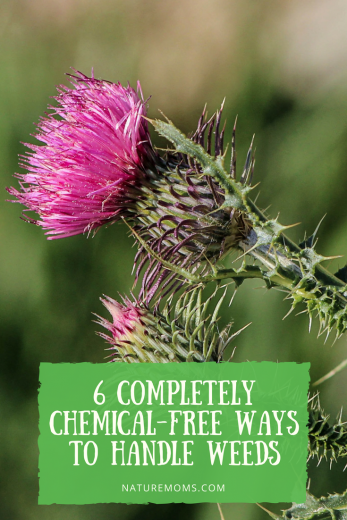 The Internet is full of products and tips on how to kill weeds. Unfortunately, many of these suggested methods do not work well, and in some cases, they actually cause more harm than they do good. All hope is not lost, however. You can still enjoy your organic vegetable garden without it being overrun by unsightly weeds.
The Internet is full of products and tips on how to kill weeds. Unfortunately, many of these suggested methods do not work well, and in some cases, they actually cause more harm than they do good. All hope is not lost, however. You can still enjoy your organic vegetable garden without it being overrun by unsightly weeds.
When it comes to weed control, the old adage “an ounce of prevention is worth a pound of cure” holds true. With a little planning, you can create an inhospitable environment for these unwanted garden guests without exposing your soil, plants, pets, and your family to toxic chemicals or home remedies that merely waste your time.
Here are six completely chemical-free ways to handle the weed problem in your garden this summer:
#1: Identify Beneficial and Edible “Weeds”
Okay so the first step is identify the weeds that are plagining you. Once you know what they are you may just change your mind about them. If you realize that you are accidentally growing chickweed which can be eaten in salads and used to soothe your eczema and hives you may just decide it has a place in your garden. Or perhaps you discover that the weed competing with your veggie patch is purslane and can be used just like aloe vera, which does not grow in your own climate. Weeds once thought a nuisance become beneficial to you and you no longer care to eradicate them all.
Need help identifying them? Check out the Herbal Academy’s newest program, the Botany & Wildcrafting Course – a captivating voyage into wild edible and herbal botanicals. It is exactly the program that you have been waiting for if you are interested in learning more about plant identification and foraging. I signed up for class myself. I would love to take this course with you!
#2: Create a Physical Barrier
One way to prevent weeds from becoming established in your garden is to place a thick layer of matte newsprint or cardboard down around your vegetable plants. Then, add a two-inch layer of organic compost or mulch on top of that, being careful not to mound the mulch up around the stems of your plants. You can also use weed fabric.
A weed barrier serves two purposes: It helps to protect your vegetable plants and it makes it more difficult for weed seeds in the soil to ever see the light of day. As the growing season advances, weed seeds may drop on top of this barrier, but they should be easy to pluck out before they become too much of a bother.
#3: Give Crowd Planting a Try
Rather than planting your vegetables in tidy little rows, try planting them closer together instead. The key here is to minimize the amount of empty space left between each plant without overcrowding them. Crowd planting creates extra competition in your garden for the nutrients each plant needs to survive and thrive. This makes it more difficult for weeds to get established in the first place.
#4: Use Raised Garden Beds
Building your garden soil up, instead of digging down into the ground, offers several advantages when it comes to weed control. For starters, building your soil up above ground level means you won’t be tilling dormant weed seeds up to the surface where they have a better chance of germinating.
Plus, the soil in no dig raised or lasagna-style garden beds tends to me much looser than the compacted soil in the ground. That means that any weeds that do manage to take root in a raised bed will be much easier to pull out by hand.
Finally, raised garden beds made from cedar boards or another material present a physical barrier to the surrounding area, which also serves as a natural deterrent to weeds and even grass running rampant in your garden beds.
#5: Lend a Hand
Don’t overlook the value of putting your own two hands to work in your garden. The dirt under your fingernails is a badge of honor. If you follow the tips outlined above, you will find it much easier to stay on top of weeds in your garden so that manual labor will not be overwhelming. If a weed or two does happen to pop up, be sure to deadhead it before it it goes to seed. Then, wait until just after a really good rain shower to remove it (make sure to get all the roots!) from your garden for good.
#6: Solarization
Another benefit of raised beds is the fact that you can rotate growing crops and even give a bed a good rest if it has become plagued with disease or weeds. The best way to handle this would be solarization. Yes you cannot grow anything in that bed for the season but next year you will be much better off. It works by heating up your soil, using the sun, to kill off weed seeds, pests, and diseased organisms. Then the following year you are starting off fresh and healthy.
If weeds are the bane of your existence try some of these tactics BEFORE you resort to chemical warfare. Please and thank you.



